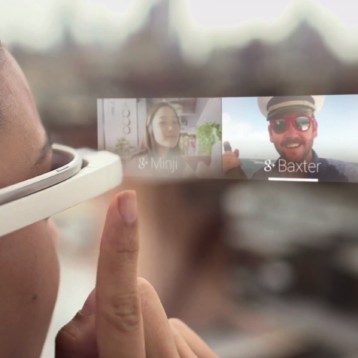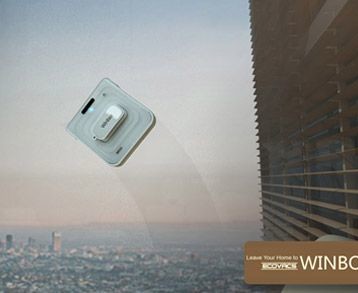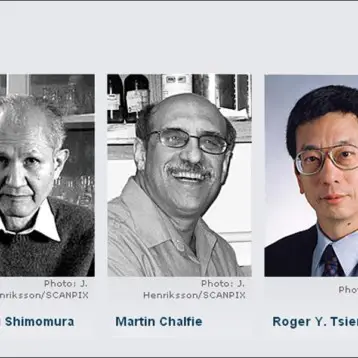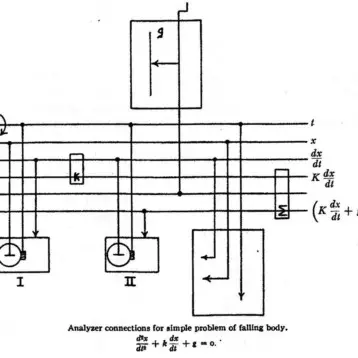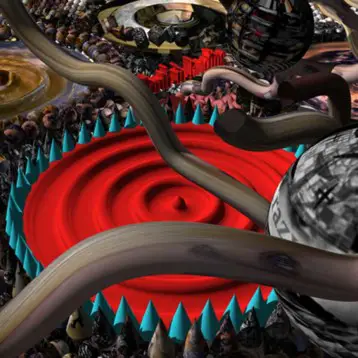Taking place for more than 20 years, the largest technology exhibition in the world might not have been as exciting as in previous years but still presented several interesting innovations. From GPS cameras to solar handbags, this article will cover some of the less familiar technologies demonstrated at CeBIT 2007.
CeBIT background
 |
| Hall 9 at CeBIT |
|
CeBIT is the world’s largest technology exhibition, showcasing digital IT and telecommunications solutions for home and business. The history of CeBIT dates back to the 1950s and the “office equipment industry” exhibition that took place at the Hanover Fair in Germany. With the continued growth of the computer and telecommunication industry in the 1970s and 1980s, the exhibition organizer, Deutsche Messe AG, created a separate exhibition to focus on the newly growing industry. The name chosen for the exhibition was Centrum für Büro und Informationstechnik – German for “Center for Office and Information Technology” – or CeBIT.
 |
| CeBIT architecture |
|
The first Hanover exhibition under the new CeBIT name took place in 1986. In a display area in excess of 200,000 square meters, 2,142 exhibitors presented their products, attracting over 300,000 visitors. In later years, CeBIT continued to draw more companies and visitors, with more than 755,000 visitors and 6,100 exhibitors from 70 countries crammed into Hanover’s huge complex for CeBIT 1995. Since then, as such technology exhibitions as CES and Computex have evolved to appeal to the growing consumer market, CeBIT has become more professional.
 |
| CeBIT animal |
|
CeBIT 2007 covered more than 280,000 square meters, including some 30 gigantic halls housing over 6000 exhibitors. Getting around the exhibition grounds is usually done on foot, an exhausting task made more difficult by a lack of benches inside the halls. The enormity of CeBIT dictates an internal bus and taxi service that constantly moves around the exhibitions grounds, helping to relieve some of the strain from walking.
CeBIT this year
 |
| ASUS XG Station |
|
The TFOT team spent four days at CeBIT 2007 looking for new and innovative technologies. Despite the thousands of exhibitors, there was very little true innovation. In addition to a few big announcements, like the ASUS Xonar D2X high-end sound card, meant to compete with the Creative X-Fi line, we were able to find a few notable products.
 |
| ASUS V60 CPU cooler |
|
On day one, we had a chance to take a close-up look at ASUS’s XG Station external device for laptops. Aside from the solid performance on the 22-inch wide-screen monitor, we were actually a bit surprised by the actual size of the unit, which although can still be considered portable is not small by any means.
 |
| ASUS motherboard wall |
|
Also in the ASUS booth, we found an assortment of cooling solutions, including a gigantic heat sink called V60 (already on sale for some time) with an internal fan and a very low noise level for an Intel Core 2 processor. After passing the cliché motherboard wall, we left the ASUS booth to check out storage solutions from the Dutch company Conceptronic.
 |
Conceptronic CH3SNAS
dual storage solution |
|
One new model on display was the CH3SNAS double SATA HHD bay. Although the new model is not wireless, like its smaller one-bay CH3WNAS brother, it does support RAID as well as a range of other advanced features. Sadly, we were told the RAID function is not controlled by hardware, which could put some strain on your CPU.
CeBIT this year was a good place to find a bag or briefcase for your laptop, with several companies presenting products for taking your portable office along for a ride. Dicota from Germany presented its DataBox line of professional briefcases capable of holding not only your 17-inch notebook but also a small printer, such as the HP Deskjet 450/460, for the businessman who needs to print on the go. Another line of bags we spotted was from California-based Axio. Founded by former Freestyle BMX rider Bob Haro, they’ve been developing and selling specially built, tough backpacks for bikes and motorbikes. Axio, with its partner Schoolio, showed a new line of semi-tough backpacks for kids, with a special compartment for laptops. However, the most interesting bag at CeBIT without a doubt was the solar bag from Sunload. This German company joined hands with the elite bag manufacturer Marc-Picard to create a series of luxury bags and briefcases, each with embedded flexible solar panels, an internal Li-Ion battery with eight cells, a car charger, and two USB connectors for recharging all your peripherals.
 |
| Left to right: Sunload, Schoolio, Dicota |
|
 |
| g-tek Wi-Fi/GSM phone |
|
Dual Wi-Fi/GSM phones seem to still be in their infancy, and only a handful of companies displayed models at CeBIT this year. One such company was the Taiwanese company g-tek, which displayed its upcoming PWG-600 Wi-Fi/GSM headset. This tri-band (900/1800/1900 MHz) phone has an internal Wi-Fi a/b/g chip that allows it to switch seamlessly between GSM and Wi-Fi, a cost-saving solution when considering the low cost of VOIP these days.
 |
| Viztone VOIP Videophone |
|
Videophones were more widely displayed this year. The Taiwanese manufacturer Amroad
showcased its Viztone model with native H.263/mpeg4 support and a typical bandwidth requirement of 384 kbps. Siemens displayed an interesting VOIP solution with what looked like e-mail support, although there was no model number for us to confirm. A different videoconferencing solution we saw came from Polycom, who showed us the HDX 9004 videoconference system with a 1280×720 resolution, a required minimum bandwidth of 1 Mbps, and a 12X optical zoom camera. The company is also developing an even-higher-resolution product with full 1080i specs, but having problems with the huge amount of bandwidth required to transmit HD video over the Internet at a reasonable frame rate.
 |
SpatialView MultiSync
LCD 3210 3D display |
|
3-D screens were a huge thing at CeBIT this year. Several companies showcased their models for both gaming and professional applications. The Korean company Dimen displayed the C190S no-glasses 3-D screen, which did not impress us with its very narrow 3-D viewing angle, requiring the viewer to sit directly in front of the screen for optimal performance. A much more impressive display came from the German-Canadian company SpatialView which developed a wide-angle no-glasses 3-D display in various sizes ranging from 8.4 inches to 45 inches. The MultiSync LCD 3210 we checked out was the 32-inch model, which performed superbly even under the bright light of the CeBIT halls. The main problem with these screens (apart from the $6000 price tags) is the need to capture five different images for each frame to create a single 3-D image, making the process of creating 3-D content long, complex, and expensive. A somewhat surprising newcomer to the 3-D-screen game is Zalman. This Korean cooling solutions manufacturer recently got into the business of 3-D displays for gamers and presented three models (19’, 19’W, and 22’W) of 3-D monitors. The Zalman monitors work only with NVIDIA-based graphic cards (due to their native stereoscopic 3-D support) and required polarized glasses (pretty ugly in our view). The result according to our brief test was excellent, and the competitive price tag should make their 3-D screens an affordable option for the masses.
 |
| NEC NC2500C behemoth |
|
On display at CeBIT were several of the largest projectors in the world. The NEC NC2500C behemoth is one of the biggest digital cinema projectors anywhere, capable of 2K resolution (2048×1080) with 25,000 ANSI and a display area of up to 25 meters. The Sony SRX-R110 projector is another beast, supporting native resolution of 4096×2160 pixels, but only 10,000 ANSI. It weights more than 80 kilograms (185 pounds) and costs just short of $100,000.
 |
| Living Kiosk |
|
A projector-related technology on display at CeBIT (not for the first time) was Living.Kiosk. This innovative technology uses a rear projector to display an image onto a thin transparent projection surface placed on a display window of a shop or a store. A camera turns the glass window into a touch screen capable of displaying interactive content, such as product information, pricing, and availability.
Very few robots were displayed this year. One interesting robotic project was a micro submarine maneuvering beautifully in a large water tank.
 |
| I2 robot |
|
A small humanoid robot on display was the I2, developed by a team of students from the Polytechnic University of Turin, Italy. Cute as it is, this tiny robot has a long way to go before it will be able to walk and move anywhere near as well as Honda’s ASIMO, which has had a few highly publicized mishaps recently.
 |
| Ritek 32GB solid state drive |
|
One upcoming revolution that shows a lot of promise is the move from conventional, mechanical hard drives to solid-state, flash-based hard drives (SSDs). Samsung, Sandisk, Ritek, and A-DATA all showcased their SSDs at CeBIT this year.
 |
A-DATA series of
solid state drives |
|
A-DATA told TFOT that its first SSD will support 45MB/s read and 35MB/s write times. Both 32 and 64GB versions will be released, and by Q3 2007 an even faster version with up to 60MB/s write speed should be introduced. The last improvement expected this year will be the launch of a 128GB model by Q4 2007. From talking to some of the other SSD manufacturers at CeBIT, we find these numbers a bit hard to swallow, but we would be happy to be proved wrong on this one.
 |
| iRex Iliad electronic book |
|
Although CeBIT 2007 was not a consumer-oriented show, we were able to find a few innovative gadgets along the way. The iRex Iliad electronic book reader was one of the first things we saw on CeBIT. From firsthand experience, we can say that the display is very comfortable to read, but the page loading was a bit sluggish, causing a black screen to appear each time we refreshed a page. On day three, we had a chance to speak with Artemy Lebedev, founder of the Russian company Artlebedev, who created the OLED keyboard now called Optimus Maximus. Unfortunately, we didn’t have a chance to look at the keyboard, since the small OLED screens are not yet ready. Apparently manufacturing such small OLED screens is a complex and a very expensive process. Although Lebedev did not want to give an exact date or price, he confirmed that the cost of the keyboard will be considerable – over $1,400 and that it will be aimed at professionals and hardcore enthusiasts with very deep pockets.
We did hear one small scoop from Lebedev: you will be able to buy a keyboard with only a small amount of OLED keys and add more later. In other words, each key, or screen, will be a plug-and-play element, another factor contributing to the complexity and cost of the system. If you thought this pay-as-you-go feature would reduce the price of the keyboard, think again: the keyboard base, without the keys or screens, will cost roughly $500.
More from CeBIT 2007
In the next days and weeks,
TFOT will continue to release and add stories from CeBIT.
 |
| Sharp 108 inch LCD |
|
World’s Largest LCD TV – This 108-inch mammoth, manufactured by Sharp and currently on display in CeBIT 2007, is the largest LCD TV ever made. The screen, measuring 93.9 inches wide by 52.9 inches high, uses eighth-generation glass substrates that enables the production of LCD TVs in sizes ranging from 13 inches to superlarge sizes like the 108-inch. It uses a TFT active-matrix drive and has 2.07 million pixels (1,920 by 1,080).
 |
| Asus P526 |
|
Asus P526 Pocket PC Phone – At CeBIT 2007, ASUS showcased its new slim, light pocket PC phone (PPC) under the designation P526. The P526 comes with Quad-band GMS/GPRS/EDGE support as well as global roaming, numeric keys, and a scrolling wheel for simple navigation. The OS will be the new Windows Mobile 6 running on a TI OMAP 850 200MHz processor with 128MB ROM and 64MB RAM memory. The P526 has a 2-megapixel camera, integrated SiRF Star III GPS, and 2.6-inch screen with 65,536 colors and 240 by 320 pixels resolution.
 |
| Tekom GX2 GPS for camera |
|
Camera GPS – The idea to integrate a camera and a GPS isn’t new. Pinpointing the exact location where a picture has been taken can help recreate a trip and might even be practical for certain professionals. The Taiwanese company Tekom demonstrated at CeBIT 2007 two GPS modules for cameras. The first, called GX1, works by connecting to a special Tekom camera, while the more interesting GX2 works by constantly recording the location of the user through its internal GPS. The GX2 then downloads this information to a PC using special software that calibrates the GPS data with the time each photo was taken. The GPS data can be used as place marks on Google Earth.





















